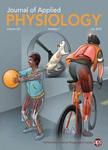版权所有:内蒙古大学图书馆 技术提供:维普资讯• 智图
内蒙古自治区呼和浩特市赛罕区大学西街235号 邮编: 010021

作者机构:York Univ Sch Kinesiol & Hlth Sci Muscle Hlth Res Ctr Toronto ON M3J 1P3 Canada
出 版 物:《JOURNAL OF APPLIED PHYSIOLOGY》 (应用生理学杂志)
年 卷 期:2016年第120卷第6期
页 面:664-673页
核心收录:
学科分类:0710[理学-生物学] 0403[教育学-体育学] 07[理学] 071003[理学-生理学]
基 金:Natural Sciences and Engineering Research Council of Canada (NSERC) NSERC-Canada
主 题:mitophagy physical activity lysosome PGC-1 mitochondria
摘 要:The merits of exercise on muscle health and well-being are numerous and well documented. However, the mechanisms underlying the robust adaptations induced by exercise, particularly on mitochondria, are less clear and much sought after. Recently, an evolutionary conserved cellular recycling mechanism known as autophagy has been implicated in the adaptations to acute and chronic exercise. A basal level of autophagy is constantly ongoing in cells and tissues, ensuring cellular clearance and energy homeostasis. This pathway can be further induced, as a survival mechanism, by cellular perturbations, such as energetic imbalance and oxidative stress. During exercise, a biphasic autophagy response is mobilized, leading to both an acute induction and a long-term potentiation of the process. Posttranslational modifications arising from upstream signaling cascades induce an acute autophagic response during a single bout of exercise by mobilizing core autophagy machinery. A transcriptional program involving the regulators Forkhead box O, transcription factor EB, p53, and peroxisome proliferator coactivator-1 alpha is also induced to fuel sustained increases in autophagic capacity. Autophagy has also been documented to mediate chronic exercise-induced metabolic benefits, and animal models in which autophagy is perturbed do not adapt to exercise to the same extent. In this review, we discuss recent developments in the field of autophagy and exercise. We specifically highlight the molecular mechanisms activated during acute exercise that lead to a prolonged adaptive response.